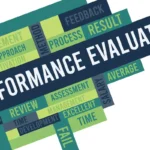The Core Principles of a Leadership Mindset
A solid leadership approach is based on clearly defined principles that guide decisions and help create a positive setting. At the core of success in leadership is the ability to influence and inspire others, while keeping integrity and authenticity.
Self-Awareness
An essential aspect of a well-rounded leadership style is self-awareness. Leaders must be aware of their strengths in addition to their weaknesses, emotions and motives. When they recognize these attributes, leaders are able to make more informed choices, communicate more effectively, and create more effective relationships. Self-awareness allows leaders to:
- Recognize and address personal biases
- Learn about the effects of their actions upon others
- Continuously strive to improve your personal development
Vision and Strategic Thinking
Visionary leaders are the most influential. They are able to anticipate the future trends and challenges as well as opportunities. This allows them to establish a the right direction and be persuasive for their organization or team. It involves:
- Set long-term goals, and developing concrete plans
- Examining complex situations in order to make informed decisions
- Promoting creative thinking and problem-solving within the group
Emotional Intelligence
The ability to be emotionally intelligent is an essential aspect of a mindset for leadership. It requires the ability to control one’s emotions, and to understand and influence the moods of other people. People with high emotional intelligence are able to navigate interpersonal dynamics efficiently and motivate their team members. Important elements are:
- Empathy Understanding and sharing the emotions of others
- Social Skills: Building connections and maintaining healthy relationships
- Self-regulation: Controlling emotions and impulses in different circumstances
Accountability and Responsibility
Leaders have to hold themselves accountable to their decisions and actions. choices. Reputation and accountability foster trust and respect between team members. Leaders who are responsible:
- Accept mistakes and learn from them
- Remain and hold others accountable for their performance
- Set clear expectations and give constructive feedback
Adaptability and Resilience
In a dynamic business environment the ability to adapt and be resilient are crucial for executives. This means adjusting strategies as a result of new information, and rebounding from defeats. Leaders who are adaptable:
- Accept change and encourage it in their teams
- Keep a positive outlook even in tough times
- Demonstrate the ability to persevere and have a positive outlook.
Effective Communication
Transparent and clear communication is the foundation of a good leadership attitude. Leaders must communicate their expectations, vision and their feedback effectively. This requires:
- Active listening means engaging with team members and understanding their perspectives from different views
- Clarity of articulation expressing concepts and instructions in a simple way
- Feedback that is constructive: Giving precise and actionable feedback that can help others grow.
Empowerment and Delegation
The ability to empower team members is an essential leadership tenet. It requires trusting other people with duties and creating a space where everyone feels appreciated. Leaders who exercise empowerment
- Tasks to delegate based on strengths of each individual
- Promote autonomy and responsible decision-making
- Help and resources to team members to be successful
Ethical Integrity
The importance of integrity in leadership is undisputed. Ethics-based leaders exhibit respect, fairness respect, and honesty in every one of of their interactions. They set the standard for their team members by:
- Respecting ethical values and standards
- Making choices that are compatible with moral values
- Promoting trust and loyalties among members of the team as well as others
Continuous Learning
The need to continue learning is essential for leaders who want to remain relevant and effective. This is a motivator for leaders to:
- Keep up-to-date with the latest industry trends and the best practices
- Pursue professional development opportunities
- Develop an environment of learning within their teams
Cultural Competence
In a variety of workplaces the ability to communicate with people from different cultures is essential. Leaders must be able to understand, respect and be aware of the differences between cultures. This means:
- Promoting inclusion and diversity inside the group
- Becoming aware of cultural biases and confronting them
- Encourage collaboration between team members from diverse backgrounds
By embracing these principles, you can to develop a solid leadership mindset to effect significant change and ensure the success of your organization. Through fostering self-awareness, preserving moral integrity and fostering flexibility Leaders can influence their teams in a positive way and navigate the challenges of business environments in a way that is effective.
How Emotional Intelligence Shapes Effective Leaders
The Role of Emotional Intelligence in Leadership
Leadership isn’t only about establishing goals and executing plans; it is a fundamentally connected to the understanding and management of human emotions. The ability to recognize and manage emotions (EI) is an ability of an individual to identify and understand their own feelings, in conjunction with other people’s emotions is a key factor in the development of leaders who are influential. Combining cognitive capabilities along with emotional intelligence gives you a complete set of tools to navigate the complexity of leadership, which will ensure both the success of your organization and personal life.
Understanding Self-Awareness
The core of emotional intelligence is self-awareness. People who have a high degree of self-awareness are aware of the strengths and weaknesses of their team and their values. This helps them stay grounded and face problems with a clear mind. Self-awareness not only enhances capacity to make decisions, it also promotes authenticity, a quality which builds trust and inspires respect among team members.
The Power of Self-Regulation
Another important element of self-regulation is emotional intelligence. Leaders who are successful can control their emotions, especially in difficult situations. Being in control of their emotions ensures a calm and secure atmosphere for their team. Self-regulation allows leaders to avoid reckless decisions and encourages and deliberate actions that are aligned with the goals of the company.
Harnessing Empathy in Leadership
Empathy, or the ability to comprehend and relate to the thoughts of others is an essential characteristic of a leader who is emotionally intelligent. Leaders with empathy are able to put themselves in the shoes of their colleagues in their shoes, and gain insights into their motives and issues. This understanding enables leaders to develop stronger connections, encourage open communication, and build an environment that is supportive of their employees.
Empathy is essential to resolve disputes efficiently. When they acknowledge and address the emotions involved, empathic leaders can solve conflicts more efficiently which can lead to an improved harmony and a collaborative workplace.
Social Skills: Building and Maintaining Relationships
Social skills, which are an essential element of emotional intelligence are vital to establishing lasting professional connections. Leaders with excellent social abilities communicate effectively and effectively, empowering and motivating their team. They excel at discussions, conflict management in addition to teambuilding resulting in an effective and motivated team.
Excellent social skills also improve networking, a key element of leading. Highly intelligent leaders are able to make beneficial connections and provide access to resources, information and opportunities that can help their companies.
Motivation: Driving Performance Through Emotional Intelligence
Motivation is a different aspect in emotional intelligence. The most successful leaders are not just self-motivated, but are also adept in inspiring others. They possess a natural desire to accomplish their objectives and are able to instill the same dedication and passion among their teams. Through recognizing and harnessing team and individual motivations, leaders can boost performance and push their teams to success.
Here are some important ways that leaders who are emotionally intelligent encourage the teams they lead:
- Honoring and celebrating achievements Honoring the achievements of team members boosts morale and motivates them to continue working.
- Achieving a Shared Vision Goals of the team with goals for the company creates a sense of purpose as well as cohesion.
- Giving constructive feedback Effective feedback can help team members improve and grow and promotes the culture of learning continuously.
The Impact of Emotional Intelligence on Organizational Success
Organisations that are run by leaders who are emotionally intelligent have higher levels of employee satisfaction, retention in addition to productivity. By fostering an emotional and positive work environment they create an environment in which employees are valued, respected and motivated to give their best effort.
Additionally, leaders with an emotional intelligence are more able to handle the obstacles and uncertainty of the current business environment. Their ability to understand and manage emotions enables them to remain adaptable, resilient, and innovative–essential for long-term success.
Incorporating emotional intelligence into the leadership techniques profoundly affects the performance of an individual’s leadership. Through embracing self-awareness, empathy, self-regulation and social skills as well as determination, leadership can help create an environment that is positive and productive and drive the success of their organizations and help their teams attain their maximum potential.
Strategies for Cultivating a Leadership Mindset in Teams
Developing a Leadership Mindset in Teams
The core of a successful company is its employees and the mindset of leadership helps the company achieve its goals. The cultivation of this mindset in teams requires strategies that are aligned with the company’s goals with personal growth. This holistic approach encourages expansion and helps build resilience, creativity and efficiency.
Understanding the Leadership Mindset
A mindset of leadership doesn’t just apply to people in managerial positions. It is a method of thinking that empowers people to lead, motivate others, and motivate the team to achieve common goals. Employees who adopt this approach show the ability to be accountable, flexible, problem-solving capabilities, and an active approach.
Lead by Example
A highly effective methods to help instill a positive leadership mindset is to have current leaders show the behaviours and attitudes they would like to be able to observe in their team. If leaders exhibit the qualities of integrity, grit and a drive to be the best, they set the standard for their peers. Encourage open communication, give the process of making decisions and be committed to ongoing learning.
Foster a Culture of Trust and Transparency
Transparency and trust are essential elements in fostering a leader mentality. Making sure employees feel comfortable to voice their opinions and concerns without fear of judgement can facilitate conversations that are open and creative. Make sure to regularly update the team on the company’s goals, challenges and successes to foster an environment of shared values and a sense of collective accountability.
- Check-ins are scheduled regularly and Team meetings.
- Be open about any organizational challenges or changes.
- Get feedback from users and use it constructively.
Encourage Ownership and Responsibility
The ability to empower employees to take charge of their projects and tasks will significantly improve their leadership skills. When employees feel that they are in control of their work, they’re more likely to be proactive and contribute effectively. Choose projects that challenge their skills and give them opportunities to take on leadership roles.
- The delegated tasks are based on strengths of each individual.
- Set expectations clearly and provide the required resources.
- Recognize and recognize leadership and initiative efforts.
Provide Opportunities for Continuous Learning
Learning opportunities for continuous learning are essential to creating a mindset of leadership. Provide training, workshops as well as mentoring programs that focus on the soft and hard abilities. Employees are kept up to date with the latest industry trends, and also equips employees with the skills needed to face complex problems.
- Create a mix of informal and formal education opportunities.
- Access to resources for leadership development.
- Facilitate collaboration and sharing of knowledge within the team.
Cultivate Emotional Intelligence
The ability to communicate emotionally (EI) is an essential aspect of a successful leadership. Teams that have an elevated EI have better success in managing stress, resolving conflict and encouraging a cooperative atmosphere. Include EI learning into program for developing leadership to assist team members in improving their empathy, self-awareness, and interpersonal capabilities.
- Facilitate workshops on the regulation of emotions and active listening.
- Provide resources for building the ability to empathize and understand the dynamics of teams.
- Create a positive culture where emotions can be expressed in a positive way.
Emphasize Collaboration and Teamwork
Leadership requires guiding others and working together as the team. Promote cross-functional collaboration and make sure that team members understand the importance of different perspectives. Collaboration in projects can improve the ability to solve problems and create the sense of leadership shared by all.
- Create projects that require teamwork between departments.
- Recognize the collective accomplishments and share the lessons learnt.
- Facilitate team-building activities that increase team bonding.
Implement Structured Feedback Mechanisms
Regular feedback is crucial to ensure that you are constantly improving and growing. Establish a structured system of feedback that will enable team members to receive constructive criticism and appreciation. Feedback should be precise and actionable. It should also be relevant to the person’s job and objectives.
- Conduct regular performance reviews.
- Use 360-degree feedback tools.
- Develop a culture where feedback is taken as an chance to develop.
Lead from any position
To build a mindset of leadership for teams, it’s vital to establish the notion that leadership doesn’t originate from top management. Encourage everyone on the team to take charge from the ground up regardless of whether it’s through championing an issue, guiding colleagues, or sharing innovative ideas.
- Develop and cultivate the potential of leaders from any level.
- Leadership roles are rotated in projects.
- Reward and recognize actions of leadership, regardless of rank.
To cultivate a leadership mindset in teams requires a strategic approach, dedication to fostering a positive environment. By being a leader by example, encouraging trust, encouraging the idea of ownership, encouraging ongoing learning, and focusing on emotional intelligence, teams are able to significantly improve their leadership abilities collectively. This approach is comprehensive and drives personal growth and drives the organization to achieve its goals with greater effectiveness and endurance.
Overcoming Common Challenges in Developing a Leadership Mindset
Understanding the Challenges in Cultivating a Leadership Mindset
The process of developing a mindset for leadership isn’t just about accepting a new position or assuming new responsibilitiesit’s a continuous process of professional and personal development. The journey to leadership is filled with obstacles that test the resiliency as well as adaptability and the ability to think strategically. Let’s explore the daily problems and learn how to conquer these challenges effectively.
Self-Doubt and Impostor Syndrome
Many new leaders struggle with impostor and self-doubt. These fears can be crippling and can cause a loss of confidence and can hinder the process of making decisions. To overcome this, you must be aware of your accomplishments and realize that everybody has doubts. Refrain from self-reflection and look for the help of mentors who provide positive feedback and encouragement. Be aware that confidence is built over time with experiences as well as positive feedback.
Resistance to Change
Change is the norm in business A true leader has to adapt and facilitate changes within their teams. The resistance to change is often rooted due to fear of change. In order to overcome this issue, it is necessary to create an environment that encourages constant improvement and open communication. Inspire your employees to embrace change by highlighting the benefits of new initiatives and linking initiatives directly to your organization’s objectives.
Balancing Authority and Empathy
Finding the right equilibrium between power and compassion is a difficult but vital element of leading. Insufficient emphasis on authority could alienate employees, whereas over-emotional empathy could make it difficult for you to exercise your authority. To achieve balance, be active in your listening, and show that you appreciate your team’s opinions But also, be decisive and precise in your choices. Set boundaries to ensure respect and trust are maintained.
Delegation Anxiety
Leaders who are influential are aware of how and when to delegate tasks, however fear of delegation is a significant obstacle. This is often due to the fear of losing control of the task or not being completed correctly. Establish a trusted team by investing in education and empowerment in order to reduce anxiety. Start with smaller tasks to try out the waters, and then gradually move on to more assignments as your trust in your team increases.
Navigating Office Politics
The politics of office can become a hazard for aspiring leaders. The process of navigating this area requires the ability to think strategically and emotional. Establish alliances across departments and be open in your interactions. Be sure to consider fairness and merit in your decision-making process and work to create an atmosphere where everyone feels respected and respected.
Time Management and Prioritization
Time is a finite resource. Leaders must be able how to effectively manage it. Ineffective time management can result in burning out and reduced productivity. Make use of tools like calendars and task management applications and prioritize your work in line with their impact and importance. Be able to let go when it is necessary and delegate tasks that others could manage to concentrate on more important concerns.
Strategies to Foster a Leadership Mindset
Continuous Learning and Development
Make sure you are constantly learning by taking classes, reading and professional development programs. Keep abreast of the latest trends in your industry and the best practices. Create a culture of learning within your organization to encourage collaboration and growth.
Building Resilience
Leaders who are resilient can weather the storms and adjust to changing situations. Increase your resilience by ensuring an appropriate balance between work and life and implementing stress management strategies and contacting help from your networks.
Effective Communication Skills
Communication is an essential aspect of leadership. Improve your ability to articulate ideas, offer feedback and actively listen. Effective communication is about transparency understanding, empathy, and transparency and also establishing trust and encouraging collaboration.
Practical Tips for Developing a Leadership Mindset
- Create clear goals: Decide the goals you want to reach both in the short-term and the long-term. This will give you a direction to guide your journey as a leader.
- Get Feedback: Always solicit feedback and give it. Constructive criticism helps fine-tune your approach.
- Rethink and adjust: After important events or decisions you must reflect on your actions. Consider what was successful or could be improved.
- Learning and Mentoring Create solid networks and look for mentors. Learn from the experiences of others can be a valuable source of information.
The Importance of Vision and Mission Alignment
Your leadership style must be aligned with the company’s mission and vision is essential to balance. This ensures cohesion and drives efforts to achieve common objectives. Consider what strategies you employ and how they help to achieve the company’s goals.
Knowing and addressing these issues can assist you in establishing a solid leadership attitude. This mentality helps you manage more effectively and motivates others around you to be aspired to excellence. It’s a process of leadership; when you have the right strategy and mindset, you’ll be able to overcome the obstacles and make lasting success.
The Role of Continuous Learning in Leadership Development
Cultivating a Growth Mindset in Leadership
Leaders need to adapt and grow in the fast-paced business world of today to remain ahead of the game. One key aspect of the continuous change is adopting the mindset of continuous learning. Leaders who are committed to continuous learning are better prepared to face the complexity and the challenges of modern day leadership.
Embrace Change and Innovation
The ability to adapt is an essential trait that every leader must possess. Leaders are able to stay abreast of the latest trends in the industry technology advancements and creative strategies by participating in ongoing training. This keeps their companies in the forefront and motivates their teams to create the mindset of creativity.
For instance, a leader who is regularly enrolled in relevant courses or goes to industry events can bring new ideas and perspectives to their team. This approach creates an atmosphere of creativity and innovation in which employees are encouraged to think outside the box and try new things.
Build Resilience and Problem-Solving Skills
Continuous learning plays an important part in increasing the resilience of a leader. Through expanding their skills and knowledge they are better equipped to face unexpected difficulties and emergencies.
A well-rounded leader who’s put money into leadership training and risk management training workshops or methods for managing stress will more effectively guide their team through difficult moments. They are equipped with the strategies and tools to remain calm and offer practical solutions when faced with pressure.
Critical Courses and Programs for Leadership Development
- Leadership Training Seminars
- Risk Management Workshops
- Stress Management Techniques
Incorporating these activities into their daily routines leaders can significantly increase their ability to deal with problems and resilience.
Enhance Communication and Emotional Intelligence
One of the most important aspects of leadership effectiveness is the ability to communicate clearly and with empathy. Continuous learning can greatly improve an individual’s emotional intelligence (EQ) which allows them to communicate with their team members on an emotional level.
Leaders who have taken the time to learn about conflict resolution, communication, and emotional intelligence classes tend to create an inclusive and positive working environment. This will in turn boost team morale and productivity because employees feel appreciated and respected.
Essential Soft Skills Training
- Communication Skills Workshops
- Conflict Resolution Training
- Emotional Intelligence Seminars
The continuous improvement of these skills helps leaders effectively manage teams of all sizes and effortlessly handle interpersonal challenges.
Drive Personal and Professional Growth
Leaders who value the continuous learning process show their leadership by example, and demonstrate an interest in personal and professional development. This dedication can be infectious, inspiring team members to achieve their personal goals and take part in ongoing learning.
Furthermore, personal development gained through continuous learning could lead to higher levels of satisfaction in work and career growth. Leaders who invest in their own development are more likely to have a rewarding career and inspire the team to realize their full potential.
Opportunities for Personal Development
- Executive Coaching
- Mentorship Programs
- Advanced Degree Courses
These programs equip leaders with the direction and expertise needed to succeed in their jobs which ultimately benefits the business.
Foster a Culture of Learning
The leaders can create an organization culture that is based on learning and growth by promoting the continuous learning. Inviting employees to take on further education, take part in workshops, or take online courses can result in an educated and enthusiastic workforce.
Strategies to Promote Continuous Learning
- Implementing Employee Development Programs
- Offering Tuition Reimbursement for Relevant Courses
- Creating a Mentorship System
- Encouraging Cross-Departmental Learning
These initiatives show an interest in employee development and could significantly improve the overall performance of an organization.
: The Ongoing Journey
Continuous learning isn’t an event that happens once, but rather an ongoing process that creates influential leaders. If they adopt this approach leaders can keep ahead of changes in their industry and improve their problem-solving abilities as well as improve their communication, promote personal growth and develop an environment of learning within their organisations. By doing this they improve their leadership abilities and push their teams and organizations towards sustainable achievement.
Conclusion
In the constantly changing and complex business environment the importance of developing a strong leadership mindset is not overstated. Leaders of today face numerous obstacles, be able to adapt to rapid changes, and motivate teams from different backgrounds to reach common goals. The fundamental principles of leadership are an essential pillar that guides leaders towards authenticity, resilience and a clear strategic vision. Through understanding and adhering to these fundamentals, leaders can help ensure long-term growth and build an inclusive, positive organizational culture.
The ability to recognize and manage emotions (EI) is at the top of a successful leadership. The ability to comprehend and manage one’s feelings while being aware of and influencing the emotions of others is the hallmark of leaders who are transformational. EI creates leaders through creating empathy, improving communication and strengthening relationships. Leaders who have emotional intelligence are adept in navigating the complexity of human behavior and creating a space where employees feel valued and appreciated. The emotional connection boosts the team’s motivation and boosts performance, which results in an overall more harmonious and productive work environment.
Implementing specific strategies to encourage growth and development is essential for fostering a team leader attitude. Promoting open communication, offering opportunities for professional growth and encouraging the culture of collaboration are vital actions. Leadership training programs and mentorship workshops can provide emerging leaders with the capabilities and knowledge needed to succeed. The organization can create a pool of skilled leaders that are prepared to tackle new challenges in the future by creating an environment that encourages the continuous development and learning.
The process of overcoming common obstacles to developing a positive mindset in leadership requires an approach that is proactive. The fear of change, resistance to change of failure, and a lack of self-awareness are issues leaders must tackle in the face. Achieving a growth mindset that sees challenges as opportunities for growth, rather than a setback, is essential. Leaders should accept the vulnerability of their employees, recognize their weaknesses and seek feedback in order to continually improve. By creating a culture of trust and mental security companies can enable leaders to experiment and take calculated risks without fear of repercussions.
Continuous learning plays an integral part in the development of leadership. The ever-changing nature of business environment requires flexible leaders who are committed to continuous learning. This means staying on top of trends in the industry, acquiring new information, and constantly developing leadership abilities. Education that is formal, like advanced degree programs or specialization in leadership and opportunities for informal learning that include taking classes, reading books and participating in professional networks are all part of the development of a leader. The organizations that focus on continuous learning develop an agile, flexible management team that ensures long-term growth and success.
Additionally, integrating the fundamental concepts of a leader’s mentality with emotional intelligence and continual learning can result in a synergistic effect. Leaders who blend these elements are better prepared to deal with the ever-changing business landscape as well as to foster innovation and motivate their team members. They show greater self-awareness as well as emotional control and interpersonal skills that are essential to efficient leadership.
It is not an inherently static thing, but rather an evolving and dynamic process. The process of creating a mindset for leadership is a continuous process, marked by self-reflection, experiences and a continuous determination to pursue the personal and professional growth. When leaders develop their mindset they impact those around them, causing an effect that ripples all over the company.
In real life this means investing in programs for leadership development that encourage mentorship, as well as creating a culture that encourages constant improvement. Leaders need to act as role models, and demonstrate the principles of a leader mindset in their everyday decisions and actions. By insisting on the importance of emotional intelligence, taking on new challenges, and dedicating themselves to continuous learning, leaders are able to influence their teams, inspire forward with innovation, and sustain business achievement.
In the end, developing a leadership attitude is an exciting journey. It requires introspection, persistence and a commitment to development. Leaders who take on this journey set themselves and their companies to be able to thrive in the future with resilient, flexible and performance. By focusing on the fundamental tenets of leadership and an integration of the emotional and a commitment to continual learning, leaders will be able to deal with the complexity of the business world today and become real catalysts for positive changes.
- Harvard Business Review – Leadership
- Website: Harvard Business Review – Leadership
- Description: Harvard Business Review offers in-depth articles, case studies, and research on various aspects of leadership and management from leading experts in the field.
- Forbes – Leadership
- Website: Forbes – Leadership
- Description: Forbes provides news and analysis on leadership topics, featuring expert insights and practical advice for business leaders.
- Center for Creative Leadership (CCL)
- Website: Center for Creative Leadership
- Description: CCL is a global organization specializing in leadership development, offering research, tools, and resources to help leaders enhance their skills and mindset.










